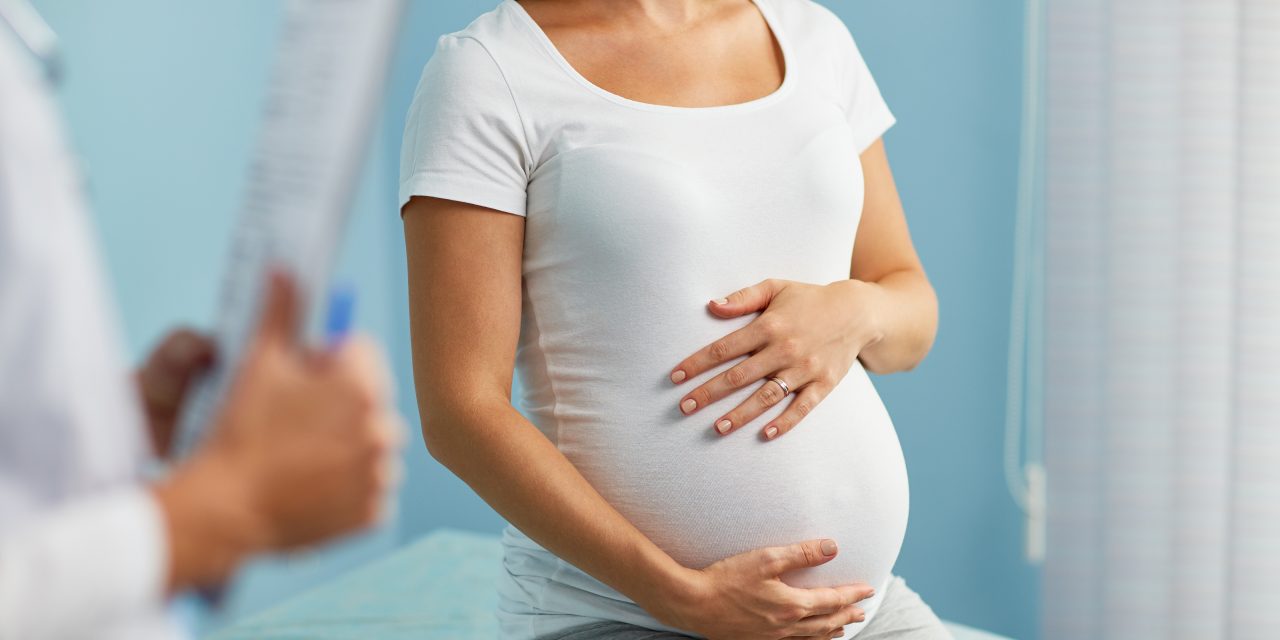
Low Back and Pelvic Pain in Pregnancy

Report on “A Randomized Controlled Trial Comparing a Multimodal Intervention and Standard Obstetrics Care for Low Back and Pelvic Pain in Pregnancy”
Pregnant patients presenting with lower back pain (LBP) and pelvic pain (PP) are among some of my favorite patients. When I have a new patient presenting with pregnancy-related LBP and/or PP, I am extremity confident in my ability to help that patient. The trouble is, there is not much research available regarding the best intervention. In this issue, I will present one of the very few articles regarding chiropractic care for LBP and PP in pregnancy, as well as issue a challenge for the upcoming year.
The study was a prospective, randomized trial and consisted of 169 patients who were between the ages of 15-45 with a single fetus from 24-28 weeks of gestation. Each of the patients was evaluated for LBP and/or PP by their obstetric provider. The exclusion criteria included acute inflammatory disease, acute infectious disease, chronic back pain for > 8 weeks before pregnancy, a mental health disorder, back pain from visceral disease, ongoing treatment for previous back pain, peripheral vascular disease, substance abuse, or litigation pending from back pain. Patients who had lower extremity neurologic symptoms or radiculopathy were not excluded. A baseline evaluation was performed by a single chiropractor and patients were randomized into 2 groups, standard obstetric care (STOB), STOB plus multimodal musculoskeletal and obstetric treatment (MOM).
The numeric rating scale (NRS), Quebec task force disability questionnaire (QDQ), and personal pain history (PPH) were the subjective questionnaires used at the baseline evaluation. The physical assessment utilized the straight leg raise (SLR), posterior PP provocation test, active SLR, and long dorsal ligament test.
The STOB group received care from their obstetricians, who had the option of providing recommendations ≥ 1 of the following remedies: rest, aerobic exercise, heating pad application for a maximum length of 10 minutes, use of acetaminophen for mild pain, or narcotics for discomfort unrelieved by other measures. The MOM group had weekly visits with the chiropractic physician, who provided education, manual therapy, and stabilization exercises based on the bio-psychosocial model. A variety of manual therapy techniques were used, including joint mobilization, post-isometric relaxation, and myofascial release. For stability, the gluteus maximus, gluteus medius, quadratus lumborum, abdominal wall, and intrinsic spine muscles were targeted in the quadruped, supine, or side-lying positions. Patients were encouraged to perform their home exercises twice per day. For patients who were hypermobile, sacroiliac belts were used. Patients had weekly appointments with their chiropractor until 33 weeks of gestation, at which time they were re-evaluated.
At baseline, there were no differences between the pain indices between the two groups. There was a reduction in 7 pain indices (NRS, QDQ, SLR, active SLR, long dorsal ligament test, PPH) but only 1 in the STOB group (PPH). Women in the STOB group reported a significant increase from the BE to 33 weeks on 5 pain indices (QDQ, SLR, active SLR, and PPH).
This study is an excellent example of the benefit that chiropractic physicians can provide to a specific group of patients for whom there is typically not a large amount of data. The approach that the chiropractic physician used in this article was well-rounded and consistent with my personal experience in dealing with pregnant patients. Unfortunately, as I mentioned before, there is simply not much research regarding chiropractic treatment for pregnancy-related lower back pain.
In my August 2013 article, I wrote about the benefit of case reports. In the closing of this article, as we are creating our goals for the 2015 year, I would like to challenge you to consider writing a case report. What condition for which there is insufficient data have you succeeded in treating? By compiling our data and making the effort to provide case reports, we will create the need for further follow up in research, which will lead to stronger evidence for the services we provide as chiropractic physicians.
References
- George JW, Skaggs CD, Thompson PA, et al. A randomized controlled trial comparing a multimodal intervention and standard obstetrics care for low back and pelvic pain in pregnancy. Am J Obstet Gynecol 2013;208:295.e1-7.


















